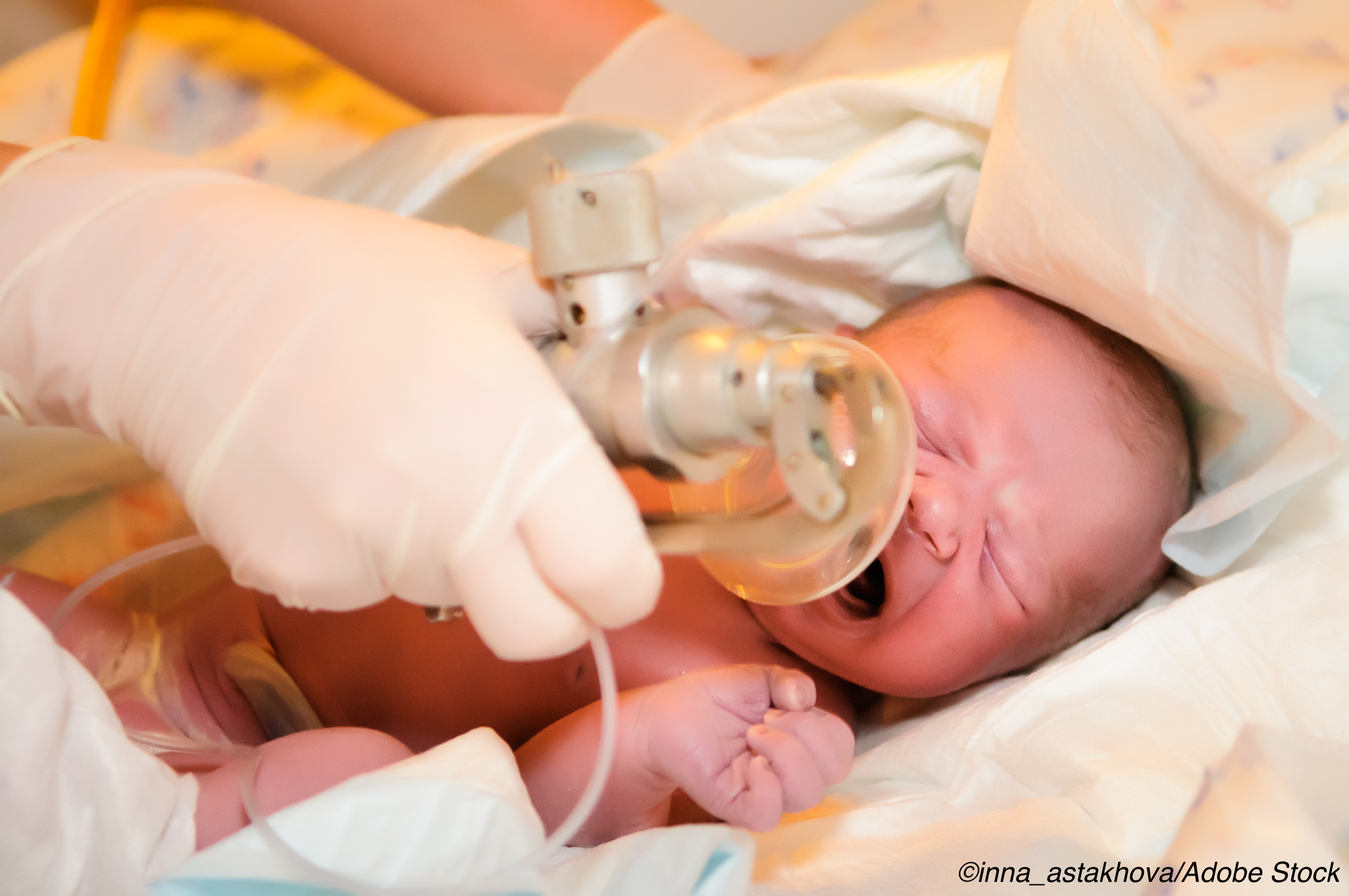
In a phase III open-label trial that compared LMA to face-mask ventilation, neonatal death or admission to a neonatal intensive care unit for treatment of moderate-to-severe hypoxic-ischemic encephalopathy (the primary outcome measure) occurred in “54 of 563 neonates (27.4%) in the LMA group and 144 of 591 (24.4%) in the face-mask group (adjusted relative risk, 1.16; 95% confidence interval [CI], 0.90 to 1.51; P=0.26),” wrote Nicolas J. Pejovic, MD, PhD, of the Center for International Health, at the University of Bergen in Bergen, Norway, and colleagues.
“Death within 7 days occurred in 21.7% of the neonates in the LMA group and 18.4% of those in the face-mask group (adjusted relative risk, 1.21; 95% CI, 0.90 to 1.63), and admission to the NICU with moderate-to-severe hypoxic–ischemic encephalopathy at day 1 to 5 during hospitalization occurred in 11.2% and 10.1%, respectively (adjusted relative risk, 1.27; 95% CI, 0.84 to 1.93),” the authors explained.
The researchers noted that the trial was designed to demonstrate superiority of LMA — which it failed to do — and that it was not designed to assess noninferiority, but “the findings appear consistent with current ILCOR recommendations. Thus, our findings suggest that the LMA can be safely used as an alternative device during newborn resuscitation, including when performed by trained midwives,” they wrote.
Successful neonatal resuscitation requires positive-pressure ventilation, but “delivering proper tidal volumes with a face mask is difficult. Mask leakage, airway blockage, and poor chest expansion have been reported. Ventilation is commonly initiated with a face mask, followed by endotracheal intubation in the event of a failure of face-mask ventilation or a need for prolonged ventilatory support. Endotracheal intubation is the most difficult skill in neonatal resuscitation, and a study showed a success rate of 24% among residents, 78% among fellows, and 86% among consultants,” Pejovic and colleagues noted.
Currently, providing advanced airway management to neonates with asphyxia is rarely attempted in low-income countries, which makes use of LMA an attractive option, and lead Pejovic et al to hypothesize that it “would be superior to face mask with respect to mortality and morbidity when used as a primary device for neonatal resuscitation by midwives.” The cuffless LMA used in this trial was “designed to provide an efficient seal to the larynx without the inflatable cuff used in conventional LMAs. Positioning is easy, and the risk of tissue compression or dislodgement is low. Thus, the device provides a useful alternative to the face mask and endotracheal intubation, especially in settings where skills in performing positive-pressure ventilation or intubation are insufficient.
The researchers conducted the trial at Mulago National Referral Hospital in Kampala, Uganda. They enrolled neonates with an estimated gestational age of “34 weeks and/or a birth weight of at least 2,000 g who required positive-pressure ventilation at birth.
The midwives who participated in the trial underwent a one-day training program using the Helping Babies Breathe curriculum during which they practiced use of the LMA as well as face mask ventilation.
“Among stillborn neonates (those born with no heart rate and no breathing efforts), fresh stillborn neonates (those without maceration) received at least 10 minutes of ventilation, and stillborn neonates with maceration grade 0 or grade I (“parboiled” reddened skin or skin slippage and peeling) received at least 1 minute of ventilation.”
The authors concluded, that “LMA was safe in the hands of midwives but did not result in a lower incidence of early neonatal death or moderate-to-severe hypoxic–ischemic encephalopathy than face-mask ventilation among neonates with asphyxia.”
Trial limitations included a lack of generalizability due to the single-site trial design, as well as crossovers that occurred in the face-mask group (10.9% vs 3.5% in the LMA group) for safety reasons, which might have improved outcomes among the face mask patients.
-
Note that in this trial, the use of LMA was safe but did not demonstrate superiority over use of face mask ventilation for treatment of asphyxia in neonates.
-
Be aware that the trial did demonstrate that LMA could be used safely by midwives in a low-income country.
Peggy Peck, Editor-in-Chief, BreakingMED™
Pejovic had nothing to disclose.
Cat ID: 138
Topic ID: 85,138,254,730,138,192,925



Create Post
Twitter/X Preview
Logout